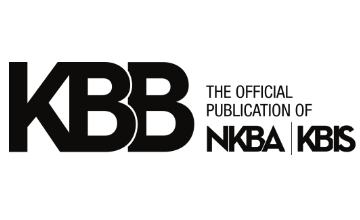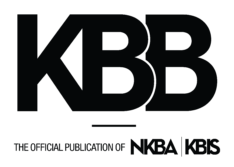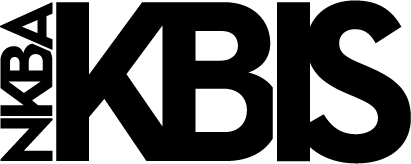According to a survey of more than 16,000 projects, whether it’s a small endeavor like a kitchen renovation or a massive data center build, construction projects are delivered on schedule, on scope and on budget less than 1% of the time. For kitchen and bath design professionals, staying on schedule is critical, as delays can lead to frustrated clients, increased costs and logistical challenges. While these issues are common across the construction industry, a recent study from MOCA Systems Inc. offers valuable insights for improving project timelines and minimizing these setbacks.
Integrating smart planning strategies into kitchen and bath construction projects not only prevents schedule variances that cause delays but also ensures a more efficient use of resources. This focus on proactive planning, clear communication and continuous improvement aligns with the growing demand for smarter, more cost-effective project planning in the design world. The same strategies that help large construction firms optimize their workflows can be equally effective in smaller, design-centric projects, allowing designers to deliver high-quality results on time and within budget.
Based on data from the Touchplan production planning platform, which analyzed more than 321,000 committed activities, the study identified the top five reasons for schedule variances. Understanding these factors and applying them to kitchen and bath projects can help keep remodels on track.
Poor Handoffs Between Trades
The top cause of delays in construction is poorly managed handoffs between trades, accounting for more than 168,000 reported issues. A handoff occurs when one team finishes a task and another takes over.
In kitchen and bath design, this could involve the transition from demolition to cabinetry installation or from plumbing to tiling. When these handoffs aren’t well-coordinated, delays and miscommunication can occur, leading to worker congestion and even rework when tasks are completed out of proper sequence.
Tip: Establish clear communication protocols between trades to ensure tasks are completed on time. Use a production planning platform to create detailed schedules that account for the most efficient sequencing of tasks and availability of resources. Use the platform to identify potential conflicts early on and create solutions before workers find themselves at a standstill with one another.
Staffing Shortages
Labor shortages, especially in skilled trades, are the second most common reason for delays, accounting for more than 65,000 reported issues in construction. This challenge is particularly acute in today’s market, where the demand for skilled tradespeople often exceeds supply. In kitchen and bath design, finding reliable subcontractors can be a challenge, and delays caused by crew shortages can have a ripple effect throughout the project. When crews are stretched thin, deadlines get pushed, quality can suffer, and tasks are often rushed to keep up with the schedule. This can result in errors that can further delays and cause costly rework.
Tip: Build a network of reliable subcontractors and have backup teams available if needed. Proper crew scheduling and communication with contractors are crucial to avoiding manpower shortages and ensuring you have the right people at the right place and time. Digital platforms can help manage crew size by providing real-time visibility into manpower requirements, ensuring balanced workloads and preventing over-stacking. As schedules adjust, crew numbers automatically update, promoting efficient and realistic planning.
Material & Equipment Delays
Material or equipment-related issues are another major cause of project delays, according to MSI’s study. In kitchen and bath projects, long lead times for custom cabinetry, appliances or fixtures can disrupt timelines. When key materials aren’t available, it often causes a chain reaction, delaying other phases of the project.
Tip: Order materials as early as possible and stay in constant communication with suppliers. Use a real-time production planning platform to set milestones for critical material deliveries and re-sequence work if materials are delayed to minimize impact on the schedule.
Design Changes
Design changes, whether because of client preferences or unforeseen complications, are another significant reason for schedule variances with 18,000 reported issues in MSI’s study. For example, discovering outdated wiring or plumbing can require modifications, which can lead to rework and additional time spent.
Tip: Set clear expectations with clients about the impact design changes can have on both cost and timelines. Use visual tools like 3D modeling or renderings to help clients finalize decisions before work begins.
Weather-Related Delays
While kitchen and bath remodels typically occur indoors, weather can still play a role in project delays. MSI’s study found that weather-related events were responsible for more than 17,000 reported variances in construction. External factors such as rain, snow or extreme temperatures can impact material deliveries, particularly if the project involves outdoor elements like plumbing, electrical work, or structural changes.
For example, heavy rain might delay the delivery of critical materials or impede access to a job site. Similarly, extremely low or high temperatures could affect certain materials, particularly adhesives, flooring or outdoor elements, potentially compromising the quality of the work.
Tip: Keep an eye on the weather forecast and adjust schedules accordingly if necessary. Building in a weather-related buffer can prevent last-minute scrambling.
Though the scale of kitchen and bath projects may be smaller than large commercial construction, the same factors – trade handoffs, staffing shortages, material delays and design changes – can significantly impact project timelines. In both types of projects, smooth coordination between different trades is essential, as delays in one area can create a domino effect, pushing back subsequent tasks. Staffing issues, such as a shortage of skilled workers or misaligned crew scheduling, can further complicate progress, leading to missed deadlines and rushed work.
Material and equipment delays also present challenges, particularly when dealing with custom or specialty items that have extended lead times. When these items do not arrive as scheduled, work may stall, disrupting the entire flow of the project. In addition, frequent or late-stage design changes can cause significant rework, forcing teams to reallocate resources, revise timelines and source new materials, all of which can slow down progress.
To mitigate these challenges, it’s crucial to adopt strategies that proactively address potential delays. Planning trade coordination and handoffs, planning for workforce availability and efficiently scheduling crews, ordering materials well in advance and setting clear expectations around design changes can all contribute to minimizing disruptions. By focusing on these key areas, kitchen and bath professionals can reduce schedule overruns and ensure projects are completed on time and within budget.
—By Jason Lyon, VP at MOCA Systems, Inc, a leading provider of software and services for the architecture, engineering and construction industries









